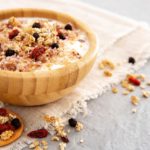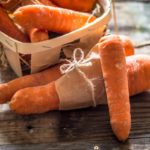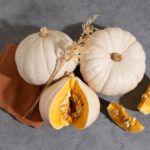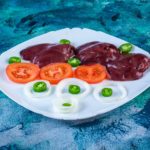
Bernadeth Atrinindarti
MAppSc (Advanced Nutrition Practice)
Jump to:
With this article we have concluded our serial on anti-cancer foods and the healthiest vegetables.
Here, we have looked at different types of vegetables ranging from spinach, squash, and tomatoes, to turnips, and made a conclusion that vegetables, in reasonable amounts, should find their place in a well-balanced diet.
Spinach
Spinach, Spinacia oleracea, is a leafy green vegetable that originated in Persia. Spinach is a good source of
- Vitamin K (for coagulation and bone health)
- Vitamin A (for healthy eyes, glowing skin and strong immunity)
- Vitamin C (immunity and collagen booster)
- Vitamin B2 (Riboflavin)
- Vitamin B6 (Pyridoxine
- Vitamin E
- Manganese
- Magnesium (for a great night of sleep)
- Vitamin B9 (Folate)
- Iron (for immunity support and energy production)
- Potassium (for blood pressure, heart rhythm and pH balance)
- Omega-3 fatty acids
These vitamins and minerals are essentials for the maintenance, improvement, and regulation of human tissues. In addition, they include major antioxidants of carotenoids and polyphenols.
Spinach is rich in lutein and zeaxanthin, carotenoids that remove unstable molecules, called free radicals, from our body before they damage it.
They’re found in spinach and other dark leafy green vegetables, and some studies show they could protect against mouth, esophagus and stomach cancer.
A study by Maeda et al. found that spinach glycoglycerolipids fraction dose-dependently inhibited cell growth of human cervix carcinoma (HeLa) cell lines.[1]
It is known that glycoglycerolipids extracted from spinach can inhibit cell proliferation by decreasing the DNA polymerase activity and have an anti-tumor effect.

Another study investigated the anticancer potential of red spinach (Amaranthus gangeticus) using both cell culture and animal models.
In the cell culture model, the plant extract demonstrated inhibition in cell growth against liver cancer (HepG2) and breast cancer (MCF-7) cells.[2]
In the animal model, rats exposed to animal carcinogens exhibited increased tumor marker enzymes, but supplementation with red spinach extract at 5, 7 and 10% significantly reduced these markers, especially at 10%.
Red spinach has potential as a natural anticancer agent
These findings suggest that red spinach has potential as a natural anticancer agent, however, further research is needed to identify its bioactive compounds and evaluate its efficacy in human application.[2]
Squash
Squash, Cucurbita moschata, is a seasonal crop indigenous to central South America that belongs to the Cucurbitaceae family, which is widely grown and consumed in many countries around the world.
Squash is recommended in a healthy diet due to its low amount of calories and its large amount of fiber.
A study by Hou et al. investigated the anticancer activity of Cucurbita moschata (butternut squash) in K562 human leukemia cells, B16 murine melanoma cells, and A549 lung adenocarcinoma cells.
The study explores cucurmosin, a bioactive compound isolated from the flesh of Cucurbita moschata. Cucurmosin demonstrates strong cytotoxic effects against cancer cells while maintaining toxicity to normal cells.[3]
Compared to other compounds, cucurmosin displays greater cytotoxicity, particularly in leukemia cells (K562). The study suggests that cucurmosin inhibits cancer cell proliferation by inducing apoptosis and differentiation.
The findings highlight cucurmosin’s potential as a therapeutic candidate for cancer treatment, warranting further biochemical and clinical research.[3]
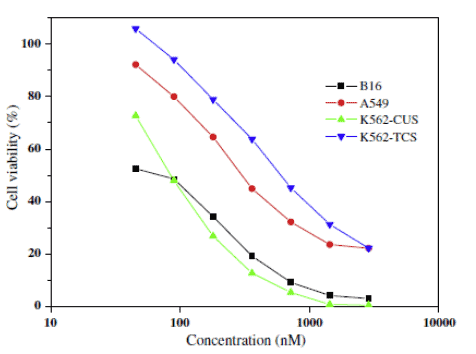
Another study investigates the anticancer effects of cucurmosin extracted from Cucurbita moschata. The research focuses on its effects on BxPC-3 pancreatic cancer cells, examining its ability to inhibit cell proliferation and induce apoptosis.[4]
Results showed that cucurmosin inhibits pancreatic cancer cell growth in a time- and dose-dependent manner. The concentration decreased over time, indicating increased cytotoxicity with prolonged exposure.
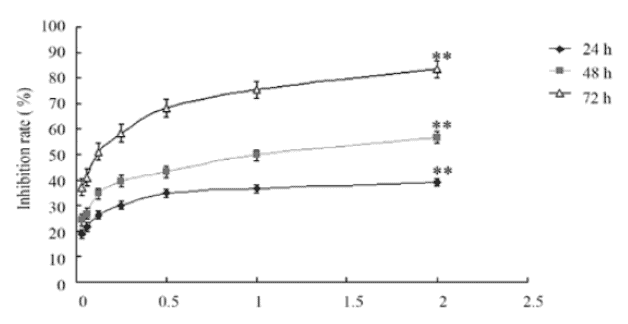
The study found that cucurmosin treatment led to cell cycle arrest, preventing cancer cells from progressing to division and growth.[4]
Swiss Chard
Swiss chard (Beta vulgaris Cicla, BVc) is a member of Chenopodiaceae. The leaves can be used in salad or cooked like spinach, and the stems are usually chopped and cooked like celery.
The leaves of chard contain nutritionally significant concentrations of
- Vitamin A (for healthy eyes, glowing skin and strong immunity)
- Vitamin B complex
- Vitamin C (immunity and collagen booster)
- Iron
- Phosphorus
- Calcium (for healthy bones, teeth and heart)
Research shows that swiss chard is also one of the best sources of betalains, water-soluble plant pigments that have a wide range of desirable biological activities, including antioxidant, anti-inflammatory, and anti-cancer properties.
A study by Ivanovic et al. reported that treatment with swiss chard extract inhibits the cell growth at different concentrations ranging from 3.124-50 mg/mL in breast cancer cell line (MCF-7) and colorectal carcinoma (HT-29). However, the result found that the antiproliferative effect of chard extracts was more effective for MCF-7 cells than for HT-29 cells.[5]
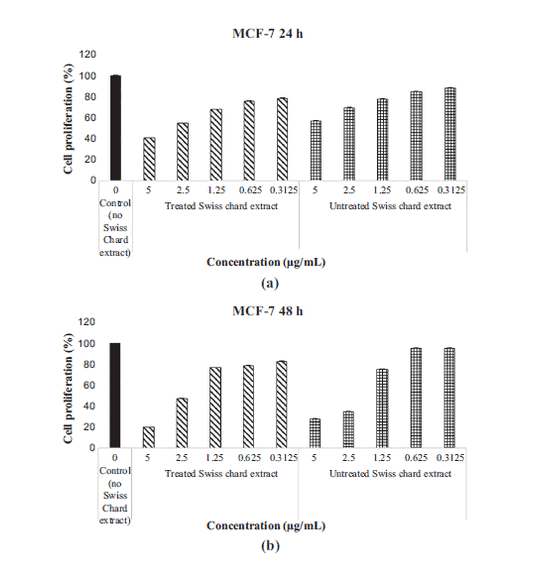
A study by Zein et al. examines the antioxidant and anticancer properties of swiss chard and red beetroot leaves. These vegetables are rich in phenolic compounds, flavonoids, and betalains, which contribute to their strong antioxidant activity.[6]
The study also assessed the anticancer potential of these leaves against breast (MCF7) and liver (HEPG2) cancer cell lines. Swiss chard leaves exhibited greater cytotoxicity against breast cancer cells, while beetroot leaves were effective against both breast and liver cancer cells. These extracts work in a dose-dependent manner, with concentration ranging from 5-50 mg/mL.[6]
The findings suggest that swiss chard and beetroot leaves may serve as natural sources of antioxidants and potential cancer-fighting agents.
Tomatoes
Tomatoes (Solanum lycopersicum) are a good source of phytochemicals and nutrients such as
- Lycopene
- Potassium (for blood pressure, heart rhythm and pH balance)
- Iron
- Vitamin B9 (Folate)
- Vitamin C
They also provide other antioxidants, such as beta-carotene, and phenolic compounds, such as flavonoids, hydroxycinnamic acid, chlorogenic, homovanillic acid, and ferulic acid.
The potential health benefits of tomatoes include anticancer properties of lycopene in relation to their anti-angiogenic properties, the reduction in insulin like growth factor (IGF) in blood and the modulation pathways that lead to cancer.
Anticancer properties of other components of tomatoes, including their fiber, vitamin C and phenolic constituent ferulic acid, have also been discussed.
A study by Sahin et al. found a positive result of lycopene in the prevention of renal cancer cells in a rat model. The ten-week-old female Eker rats were fed with 0.100 or 200 mg/kg of lycopene as part of their daily diet.[7]
The result showed that the average numbers of renal carcinomas were significantly decreased in the lycopene group. Furthermore, the tumor length in the lycopene group was decreased compared to the control rats fed only with a basal diet.[7]
A research by Friedman observed tomato compounds, particularly lycopene and α-tomatine, highlights their significant health benefits, including anticarcinogenic, cardioprotective, and immunostimulating effects both in their pure form within fresh and processed tomatoes.[8]
Lycopene exhibits anticarcinogenic and cardioprotective effectss
Furthermore, in an animal model study including rainbow trout and mice, α-tomatine supplementation reduced tumor growth and improved survival rates.
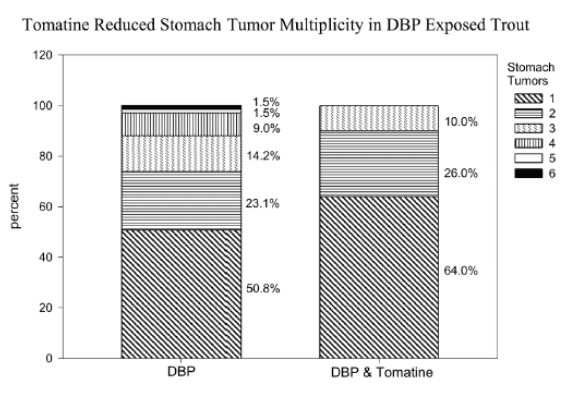
Dietary tomatine significantly reduced
- liver tumors from 37% to 19% (a 48.7% reduction)
- stomach tumors from 46.4% to 29.4% (a 36.6% reduction)
- stomach tumor multiplicity (number of tumors per affected fish)[9]
Turnip
Turnip, Brassica rapa L., is indigenous to Europe, Russia, Central Asia, and the Near East, and is now widely cultivated as a vegetable and oil source throughout the world.
Multiple bioactive components in turnips, such as glucosinolates, isothiocyanate, phenolic compounds, flavonoids, and organic acids, were identified.
The bioactivity studies on turnips revealed its
- Anticancer
- Antimicrob
- Anti-hypoxia
- Anti-diabetes
- Anti-oxidation
- Nephroprotective activity
A study by Wu et al. was initiated to search for the major compounds in turnip that might have a positive effect in cancer cell lines. Three major compounds were found which are 6-paradol, trans-6-shogaol, and Brassicaphenanthrene A.[10]
In the anticancer evaluation, the compounds were tested against three human cancer cell lines: HCT-116 (colon cancer), MCF-7 (breast cancer), and HeLa (cervical cancer).
The result demonstrated that brassicaphenanthrene A inhibited cancer cell growth and trans-6-shogaol exhibited the strongest cytotoxicity, indicating its potential as an anticancer agent.[10]

Another study explores the bioactive properties of β-phenylethyl isothiocyanate, a major breakdown product of glucosinolates found in turnips (Brassica rapa L.).[11]
The study assessed the anticancer effects using HepG2 liver cancer cells. The result showed that the compound inhibited cancer cell growth in a dose-dependent manner, ranging from 5-100 μM.
This indicates that β-phenylethyl isothiocyanate is effective in reducing the viability of cancer cells, suggesting potential use as a natural anticancer agent.[11]
If you have just joined us, we suggest starting with the first article in the series Anti-cancer foods: The Healthiest Vegetables (Part 1).
Bernadeth’s passion in cooking, food and health led her to learn more about nutrition and the importance of functional foods. As a nutritionist, Bernadeth’s goal is to encourage a healthy-balanced diet and share the evidence-based nutrition knowledge in order for people to live healthier and longer lives…
If you would like to learn more about Bernadeth, see Expert: Bernadeth Atrinindarti.
References
(1) Maeda, N., Yoshida, H., & Mizushina, Y. (2010). Chapter 26 – Spinach and Health: Anticancer Effect. In R. R. Watson & V. R. Preedy (Eds.), Bioactive Foods in Promoting Health (pp. 393-405). San Diego: Academic Press.
(2) Sani, H. A., Rahmat, A., Ismail, M., Rosli, R., & Endrini, S. (2004). Potential anticancer effect of red spinach (Amaranthus gangeticus) extract. Asia Pacific journal of clinical nutrition, 13(4), 396–400. https://apjcn.nhri.org.tw/server/apjcn/13/4/396.pdf
(3) Hou, X., Meehan, E. J., Xie, J., Huang, M., Chen, M., & Chen, L. (2008). Atomic resolution structure of cucurmosin, a novel type 1 ribosome-inactivating protein from the sarcocarp of Cucurbita moschata. Journal of Structural Biology, 164(1), 81-87.
(4) Zhang, B., Huang, H., Xie, J., Xu, C., Chen, M., Wang, C. … Yin, Q. (2012). Cucurmosin induces apoptosis of BxPC-3 human pancreatic cancer cells via inactivation of the EGFR signaling pathway. Oncology Reports, 27, 891-897.
(5) Ivanović, L., Topalović, A., Bogdanović, V., Đurović, D., Mugoša, B., Jadranin, M., … & Beškoski, V. (2021). Antiproliferative activity and antioxidative potential of Swiss chard from Montenegro, grown under different irrigation and fertilization regimes. British Food Journal, 123(7), 2335-2348.
(6) Zein, H., Hashish, A. E. M. S., & Ismaiel, G. (2015). The antioxidant and anticancer activities of Swiss chard and red beetroot leaves. Curr. Sci. Int, 4, 491-498. https://www.curresweb.com/csi/csi/2015/491-498.pdf
(7) Sahin, K., Cross, B., Sahin, N., Ciccone, K., Suleiman, S., Osunkoya, A. O., . . . Kucuk, O. (2015). Lycopene in the prevention of renal cell cancer in the TSC2 mutant Eker rat model. Archives of Biochemistry and Biophysics, 572, 36-39.
(8) Friedman, M. (2013). Anticarcinogenic, Cardioprotective, and Other Health Benefits of Tomato Compounds Lycopene, α-Tomatine, and Tomatidine in Pure Form and in Fresh and Processed Tomatoes. Journal of Agricultural and Food Chemistry, 61(40), 9534-9550. doi:10.1021/jf402654e
(9) Friedman, M., McQuistan, T., Hendricks, J. D., Pereira, C., & Bailey, G. S. (2007). Protective effect of dietary tomatine against dibenzo[a,l]pyrene (DBP)-induced liver and stomach tumors in rainbow trout. Molecular nutrition & food research, 51(12), 1485–1491.
(10) Wu, Q., Cho, J. G., Yoo, K. H., Jeong, T. S., Park, J. H., Kim, S. Y., Kang, J. H., Chung, I. S., Choi, M. S., Lee, K. T., Chung, H. G., Bang, M. H., & Baek, N. I. (2013). A new phenanthrene derivative and two diarylheptanoids from the roots of Brassica rapa ssp. campestris inhibit the growth of cancer cell lines and LDL-oxidation. Archives of pharmacal research, 36(4), 423–429.
(11) Hong, E., & Kim, G.-H. (2008). Anticancer and Antimicrobial Activities of β-Phenylethyl Isothiocyanate in Brassica rapa L. Food Science and Technology Research, 14(4), 377-377. doi:10.3136/fstr.14.377


